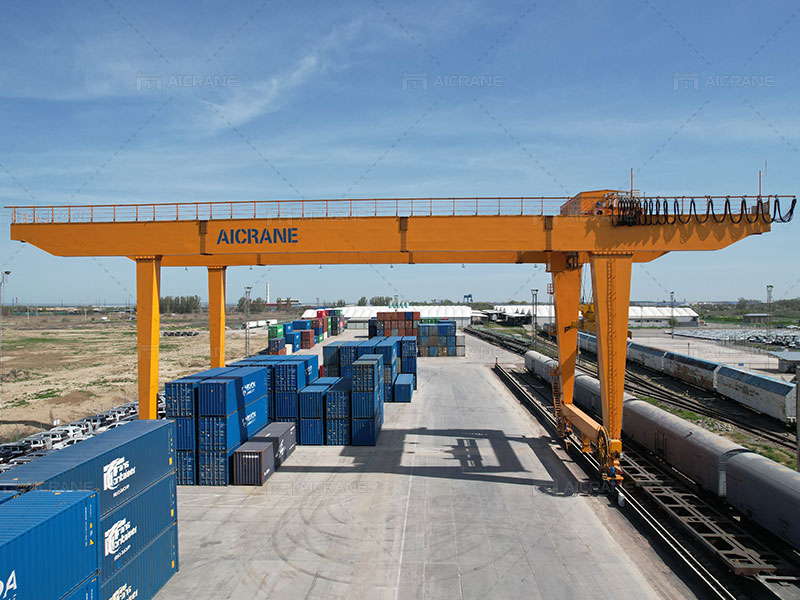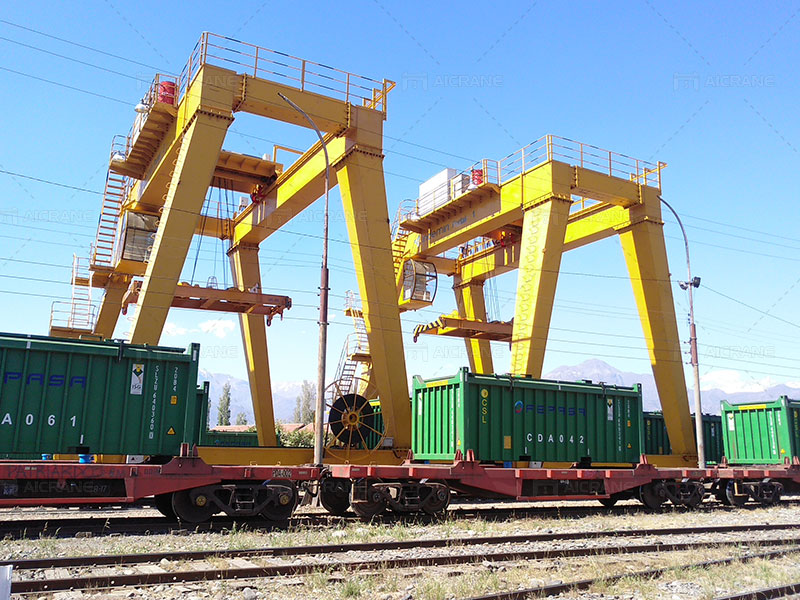Container handling gantry cranes are essential equipment in ports and shipping yards, facilitating the efficient loading and unloading of shipping containers. Given their importance, understanding the power requirements of these cranes is crucial for ensuring optimal performance, safety, and energy efficiency. This article delves into the various aspects of power requirements for container handling gantry cranes, including electrical specifications, power sources, energy consumption, and considerations for selection and installation.

1. Understanding Power Requirements
The power requirements of a container handling gantry crane are influenced by several factors, including the crane’s size, lifting capacity, operational speed, and the technology used in its design. Typically, these cranes require a three-phase electrical supply to operate their motors and control systems effectively. The use of three-phase power allows for smoother operation, reduced power losses, and increased efficiency compared to single-phase systems.
a. Electrical Specifications
The primary electrical specifications for a container handling gantry crane include:
- Voltage: The most common voltage levels for industrial cranes are 380V, 400V, and 480V, depending on regional standards. It is essential to ensure that the crane is compatible with the local power supply.
- Current: The required current will vary based on the crane’s specifications. Large gantry cranes with higher lifting capacities will generally require more current. Operators must calculate the total current draw based on the crane’s operational needs.
- Frequency: The frequency of the electrical supply (typically 50 Hz or 60 Hz) must match the crane’s motor specifications to ensure proper operation.
b. Power Factor
The power factor is a crucial consideration in the power requirements of gantry cranes. It is a measure of how effectively electrical power is being converted into useful work output. A power factor close to 1 indicates efficient usage of electrical power. In crane applications, power factors may range from 0.8 to 0.95, depending on the motor type and load conditions. Ensuring a high power factor can lead to reduced energy costs and improved system efficiency.

2. Power Sources
Container handling gantry cranes can be powered through various sources, including:
a. Grid Power
Most gantry cranes are powered by the local electrical grid. This setup requires a robust electrical infrastructure, including transformers and switchgear, to manage the high power demands. When designing a crane installation, it’s crucial to coordinate with the local utility provider to ensure adequate supply and prevent outages during operation.
b. Diesel Generators
In situations where grid power is unreliable or unavailable, diesel generators can provide a viable power source. These generators can offer flexibility and mobility, allowing cranes to operate in remote locations. However, it’s essential to consider the environmental impact of diesel emissions and fuel consumption.
c. Battery-Powered Systems
For some applications, especially in environmentally sensitive areas, battery-powered systems are gaining popularity. Electric-powered gantry cranes using battery packs can operate without direct access to the grid, making them suitable for indoor or restricted environments. These systems require careful management of battery charging and maintenance to ensure operational readiness.
3. Energy Consumption
Understanding energy consumption is critical for optimizing operational costs. The energy required for a gantry crane can be influenced by several factors:
a. Lifting Capacity and Load Characteristics
The lifting capacity of a crane directly affects its energy consumption. Heavier loads require more power to lift, which increases energy use. Operators should be aware of the average load weights and their frequency to estimate overall energy requirements accurately.
b. Operational Speed
The speed at which a crane operates also impacts energy consumption. Faster operations generally require more power. However, excessive speed can lead to safety risks and equipment wear. Finding the right balance between speed and energy efficiency is essential.
c. Duty Cycle
The duty cycle of a gantry crane refers to the frequency and duration of its operations over a specific period. Cranes that are in continuous use will have higher energy consumption than those used intermittently. Understanding the expected duty cycle can help in power requirement planning and energy management. To learn more about cranes, visit website https://aicraneliftingsolution.com/
4. Selecting the Right Power Supply
Choosing the right power supply for a container handling gantry crane is essential for performance and safety. Here are some considerations:
a. Capacity Planning
Before installation, a thorough analysis of the crane’s power requirements should be conducted. This includes calculating the total load, operational speed, and any additional equipment that may be connected. A qualified electrical engineer should be involved in this process to ensure compliance with safety standards and regulations.
b. Redundancy and Backup Systems
For critical operations, it is advisable to incorporate redundancy into the power supply. This may include backup generators or uninterruptible power supplies (UPS) to prevent downtime in case of a power failure. Such measures enhance operational reliability and minimize disruptions in container handling.
c. Safety and Compliance
Electrical installations must comply with local and international safety standards, such as the National Electrical Code (NEC) in the United States or the International Electrotechnical Commission (IEC) standards globally. Compliance ensures that installations are safe for operation and minimizes the risk of electrical hazards.
5. Conclusion
Understanding the power requirements of container handling gantry cranes is vital for efficient operation, safety, and cost management. Factors such as electrical specifications, power sources, energy consumption, and proper selection and installation all play a role in determining the power needs of these cranes. By carefully considering these aspects, operators can ensure that their container handling operations run smoothly and efficiently, ultimately contributing to the success of port and shipping yard operations.
In an era of increasing demand for efficiency and sustainability, staying informed about power requirements will enable port authorities and operators to make informed decisions that enhance operational performance while also minimizing environmental impact. As technology advances, ongoing developments in power systems and crane design will continue to shape the future of container handling, making it imperative for industry professionals to remain abreast of these changes.